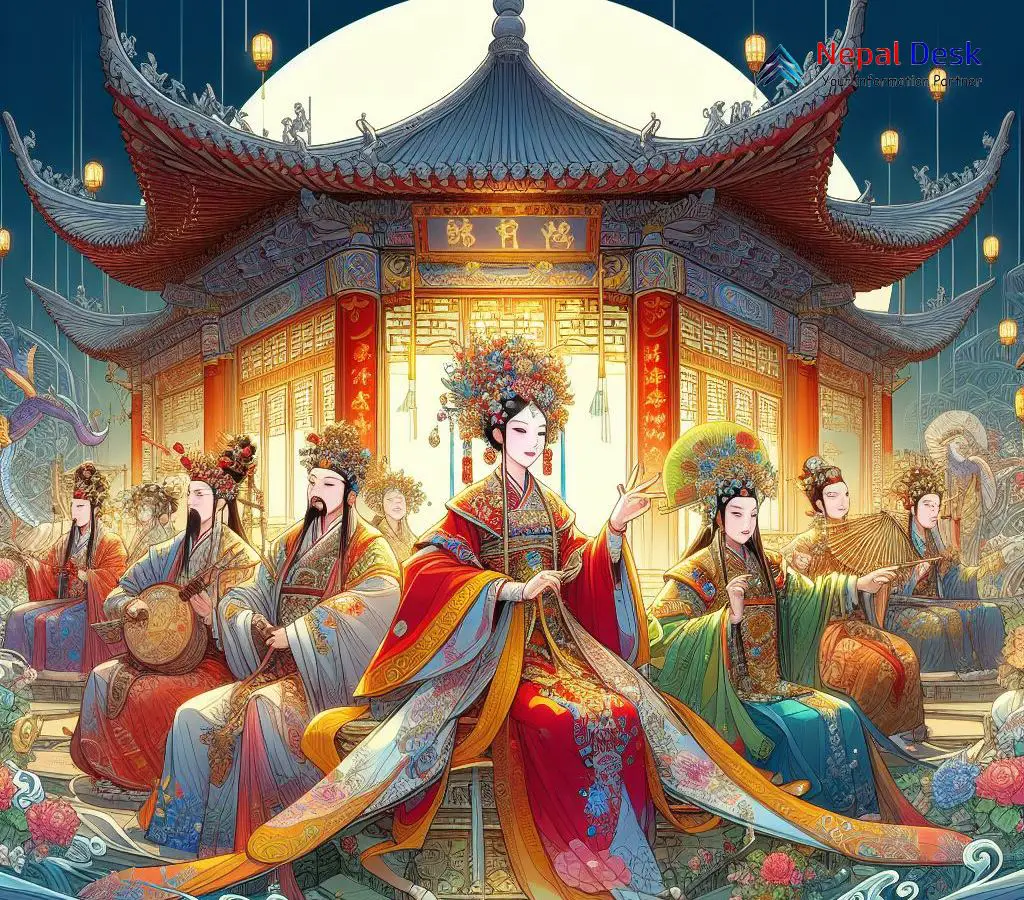Chinese Cultural Extravaganza Marks Festive Cheer in Nepal
Published Date

Published Date
Joyous celebration of Chinese New Year in Nepal as Anhui Province artists captivate audiences with traditional dances, opera, and cultural showcases.
⏱ 4 min read
On the occasion of the coming Chinese New Year, a troupe of artists from Anhui Province in central China delighted an audience in Nepal's capital with a vibrant display of their cultural heritage.
More than 600 attendees applauded enthusiastically as the artists showcased a variety of performances, including traditional dances, face-changing opera, instrumental melodies, local operatic vocals, and a blend of magic and acrobatic feats.
Accompanying the performance was a photographic exhibition that showcased the scenic beauty of Anhui Province—a prelude to the evening's cultural spectacle, aimed at celebrating and sharing the joy of the upcoming Chinese New Year, which falls on February 10 this year.
This cultural event is part of a broader series of Chinese New Year festivities unfolding in Nepal since January 14, set to continue until February 18. These festivities feature engaging activities such as a lantern show, kirin dances, dragon and lion dances, a Nepal-China friendship football match, Spring Festival fairs, and performances of classical Chinese opera.
Addressing the crowd before the show's commencement, Dev Raj Ghimire, the Speaker of Nepal's House of Representatives, expressed heartfelt wishes for happiness and peace to the Chinese people. He spoke of health and longevity coupled with familial joy.
Speaker Ghimire also highlighted the enduring friendship between Nepal and China, underscoring recent successes in economic, political, social, and religious partnerships between the two nations.
Chen Song, the Chinese Ambassador to Nepal, expressed his aspirations for these New Year celebrations to foster deeper cultural connections between Nepali and Chinese communities. He emphasized culture's pivotal role in strengthening people-to-people exchanges and creating win-win cooperation frameworks—seeking to consolidate emotional ties in pursuit of a collective future for China-Nepal relations.
The "Happy Chinese New Year" celebration was jointly organized by China's Ministry of Culture and Tourism along with the Chinese Embassy in Nepal. Additionally involved were Anhui Province’s Department of Culture and Tourism and the China Cultural Center in Nepal.
About Chinese New Year:
The Spring Festival, better known as the Chinese New Year, is the most significant celebration in Chinese culture. It signifies the advent of a new annum as per the traditional lunisolar Chinese calendar, which usually takes place between January 21st and February 20th according to the Gregorian calendar. The forthcoming Chinese New Year is scheduled for Saturday, February 10th, 2024.
The festival extends over a fortnight and reaches its zenith with the Lantern Festival. Herein, we enumerate some pivotal aspects of this celebration:
Observances and Customs:
- Family Gatherings: This period serves as an occasion for family members to congregate, embark on homeward journeys, and partake in convivial banquets.
- Adornments: Both private domiciles and public avenues are embellished with scarlet lanterns, paper cuttings, and scrolls bearing propitious inscriptions.
- Pyrotechnics: The detonation of firecrackers and the display of fireworks are acts believed to dispel evil spirits while simultaneously attracting good fortune.
- Lion Dances: The spirited maneuvers carried out by individuals in lion costumes are emblematic of affluence and joy.
- Red Packets: These envelopes, entrusted with currency by the elders to youths and unwed adults, serve as harbingers of luck and divine favor.
- Culinary Delights: Sumptuous fare such as dumplings, spring rolls, and fish are consumed to symbolize wealth and abundance.
- Veneration of Forebears: This act involves showing deference to departed forefathers as an expression of gratitude and familial connection.
Meaningful Implications:
- Rejuvenation and Evolution: The festival ushers out the preceding year while welcoming a new era brimming with optimism and potential for new ventures.
- Honoring Kinship and Heritage: It reinforces familial unity while perpetuating age-old cultural tenets amongst younger kin.
- Favorable Commencements: It embodies a juncture for soliciting blessings of well-being, affluence, and success for the forthcoming year.
Beyond the confines of China, the Chinese New Year is a festivity embraced by Chinese diasporas globally, rendering it an exuberant international cultural marvel.
